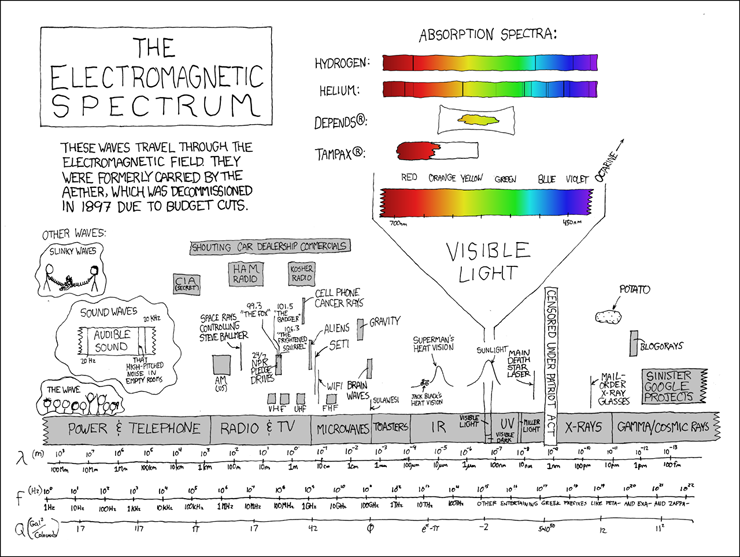Secret strategies behind many viral videos
As usual, when there's a new medium of expression, it's lawlessness and wild fun for a while, but where there are people, there are advertisers and marketers right on their heels to try to grab their attention. I don't know how I feel about this, but I am a bit disgusted for some reason I can't yet put my finger on. Perhaps it's big corporations posing as 'homegrown'. In any case, if anything positive has come out of this whole thing it's that advertising has become funnier over the years. Props to Geico.
http://www.techcrunch.com/2007
Verizon opens its network to any device
Traditionally, telecos have seen themselves trying to be both line and content providers. So in 50 years, we've only had call waiting, *69, and three way calling. So for a teleco to open up its wireless network to any device is pretty big. Of course, it's in response to Google's open phone platform Android, and their bid for the 700MHz spectrum. I'm cautiously optimistic about the open-ness of the mobile web.
http://bits.blogs.nytimes.com
Google goes into renewable energy
If I built big datacenters that sucked down lots of energy, I'd be interested in this too.
http://www.google.com/intl/en
How to destroy the web 2.0 look
I think none of us here are designers, but I check in on this once in a while, since I have to do front-end design. The so-called web 2.0 has a look...the gradients, the beveled edges, and the rounded corners. But I'm also seeing more designers move away from that, and trying to break out of an obvious grid layout, so you might see that bleed over the web apps.
http://www.snap2objects.com
Metalayer over web pages
The web was always meant to be a read/write medium. In the beginning, it was a predominately read medium until wikis and whatnot came along. Some people are still trying to push the envelope by putting a metalayer over web pages that you can write on and communicate to others visiting the same space. So far, nothing in this space has made huge waves, but I expect there to be more developments on this front.
http://www.shiftspace.org
Running in Shoes in Ruby
Ruby is a nice language, but there are some problems with its Std lib. One of which is a poor GUI toolkit. It uses the old Tk toolkit which is super ugly. Shoes is a GUI toolkit by _why_the_lucky_stiff for native apps that is meant to write like web pages. That makes it pretty easy to figure out. Check out some of the screenshots with the accompanying source. It makes Java GUIs seem terribly verbose.
http://code.whytheluckystiff
MIT's Open Courseware
For those of you that would like to brush up on various undergraduate and graduate topics. It's probably less relevant to those of you at the lab, due to the free master's program. They have courses on other topics besides math too.
http://ocw.mit.edu/OcwWeb
Future of Javascript 2
Javascript, as I've said before, has surprised me. My previous impression of Javascript was a dinky little language on browsers that you use to to do some form validation. It's evolved into the most used language on the widest platform on the planet. It supports references, OOP, and closures. This slide details more of what's to come. Beyond Ajax, I think you'll start to see more and more flexible interfaces in javascript, starting with SVG. Various browsers are making their javascript interpreters faster and meaner, so you'll see more web sites pushing this envelope by making their websites more expressive.
http://ejohn.org/blog/easy-pdf
Jquery vs Prototype
Jquery and prototype are two javascript libraries that provide lots of syntactic sugar as well as hiding browser incompatibilities from the application developer. People often dish it out between the two, so here's two perspectives.
http://jquery.com/blog/2006/08
http://alternateidea.com/blog
SeaForth
Forth is a stack-based programming language. This is a piece of hardware implemented with Forth on top. I actually didn't read too much of it, because I didn't get everything they were saying, but Mike and I were talking about Forth the other day, and this reminded me of it.
http://www.falvotech.com/blog
Quantum Mechanics from a computational point of view
I never really got the wave equation when I was an undergrad. And quantum mechanics had seemed odd and spooky to me. However, this article on the math behind it is fairly clear. It explains how you get negative probabilities, clearly, but gets kinda murky when it starts talking about mixed states. Currently, in machine learning and search, statistical methods dominate the field over ontological methods. I wonder how long it might be before probabilistic methods in quantum mechanics will find a use in machine learning?
http://www.scottaaronson.com
String Theory in two minutes
This is something fun, isn't hard, and doesn't take too long. It's just a short video on string theory...in two minutes! If you want to know more about string theory, click on the second link. It's a tutorial.
http://discovermagazine.com
http://www.slimy.com/~steuard
3D mouse from electric field sensing
Minority Report certainly inspired some HCI people to get cracking. This is a discussion of how to detect hand gestures using an elec field. I wasn't able to get all the way through it, cuz I started watching math lectures. However, it is an interesting piece. I don't think we'll see 3D mice any time soon, but with mobile devices having small keyboards, this sort of technology might become very useful.
http://www.research.ibm.com
Similarity Search
And lastly, a talk on similarity search. It's a different measure of similarity. Rather than putting everything in a parameterized space and using malahanobis distance, you calculate distance based on the graphical structure the data makes. I've watched it twice, and I feel like I'm still missing something. At least the accent reminds me of "Hokey, here's the earf"
http://www.youtube.com/watch?v
http://www.endofworld.net/
http://simsearch.yury.name

